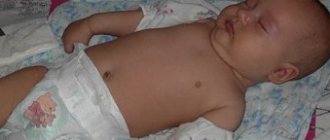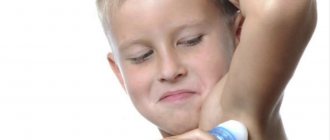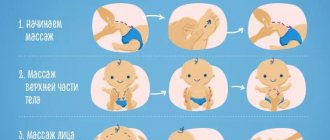The baby's independent manifestation of activity becomes noticeable at about two months of age. The first signs of a child’s mobility are associated with attempts to turn the head and hold it at least for a short time. Having managed to cope with this task, the baby develops activity and begins to master more complex movements. But if at 2-3 months the child still does not try to become more independent, parents begin to worry. To relieve yourself of all anxious thoughts, you need to find out when babies begin to roll over.
When does the baby start to roll over?
First of all, parents need to learn that there is no need to force their child to fit the norm. Each baby is individual. Therefore, it is impossible to determine exactly what time a child begins to roll over onto his side or tummy.
Each child develops at a different speed: children with a developed muscular system become mobile much earlier than children whose neuromuscular system is delayed in development. From the 3rd to the 8th month, learning to roll over is normal.
It is a great joy for parents when their children begin to roll over. There is no point in worrying if a child at 5 months does not yet turn on his side or on his tummy. This only speaks of the well-fed and calm nature of the baby. To make him more active, he needs the help of his parents. They should try to create situations that will force the baby to turn his head involuntarily or make every effort to turn in the direction that interests him.
Children often skip the turning over period. This is not a cause for concern, and there is no need to force him to move, since sitting the child down prematurely or teaching him to change position will lead to disruption of the musculoskeletal system.
Attention: children's spine!
If there are no complaints, the child should be examined by an orthopedist at one month, three months, one, three, five, six, eight, ten, twelve and fourteen years. Why so often? Just as you sometimes don't feel like you're getting tooth decay, you may not know that your child has a vertebral subluxation. Therefore, I recommend periodically taking your child to an orthopedic doctor to check his spine.
Pinched nerves in the spine, called vertebral subluxation, usually occur as a result of slight compression or misalignment of the vertebrae. The spinal cord runs through the spine, which can be compared to a cable consisting of billions of nerve fibers. It is through them that “commands” (impulses) travel from the brain to all organs. As soon as one of the nerves in the spinal cord becomes blocked or damaged, disease begins to develop in the body.
Why do the vertebrae move out of their natural position?
Spinal injuries can occur during childbirth. For example, with the head standing in the birth canal for a long time, with rapid labor, and also with the use of forceps, especially if the baby is pulled out by the head or turned.
The thing is that the head of a newborn baby is heavy relative to its total mass, and the muscular-ligamentous apparatus of the cervical spine cannot yet hold the 7 cervical vertebrae in a physiological position when stretched by weight. This can lead to subluxations in the cervical spine and functional blocks in the spinal motion segments.
This is why orthopedists are so against picking up a newborn by the legs and holding him upside down. The famous French obstetrician Frederic Lebois wrote about this barbaric practice in his book “Birth without Violence”: “We know too little about our body, so little that we forget what an important role the spine plays in it... So why do we, knowing that a baby’s fragile spine can be easily damaged, we stubbornly continue to hold newborns upside down, and even shake them.”
For almost a hundred years, orthopedists have also known the so-called “whiplash syndrome”: if a newborn is jerked sharply, this can lead to loss of vision, cerebral disorders, paralysis or convulsions.
Childhood is the most active time of a person’s life. Jumping and running, falls and injuries are all components of childhood, and all this can lead to displacement of the vertebrae. Chronic diseases with metabolic disorders, muscular dystonia of neurogenic origin, incorrect motor stereotypes, psychological pressures and complexes lead to poor posture by the age of four to five years. If poor posture is not treated in time, it will lead to kyphosis, scoliosis and osteochondropathy.
Here are some symptoms that the spine is not in order:
- chronic fatigue;
- one shoulder or hip is higher than the other;
- protruding shoulder blades;
- curvature of the neck;
- one leg is shorter than the other;
- clubfoot;
- joint pain;
- inability to stand still;
- hyperactivity;
- frequent falls;
- cracking in joints when bending arms and legs;
- hypermobility of joints;
- nervousness.
All parents need to do to suspect orthopedic pathology is to undress the child down to his panties, place him on a hard surface and carefully look at protruding body landmarks from the front, back and sides. If you find the slightest discrepancy between the right and left sides, show the child to an orthopedic specialist without waiting for a routine medical examination. Remember: if the spine is unhealthy, then the child’s entire body is unhealthy.
Lyudmila Chirkova, orthopedist, chiropractor
How to help your baby learn to roll over?
After mastering holding the head, a stage comes when the child begins to roll over onto his side or tummy. Parents should pay very close attention to this period.
To help their baby, they try to develop his chest and do various massages. They are doing the right thing. All pediatricians unanimously say that exercises with turning over from back to side or tummy can be added to your baby’s gymnastics. In order to easily turn the child over during exercises, you need to:
- Lay him on his back.
- Gently stroking, straighten the arms.
- Take the right handle and move it to the side (to the left) so that he is on his left side.
- Repeat the same with your left hand.
This gymnastics strengthens the muscles of the arms and back.
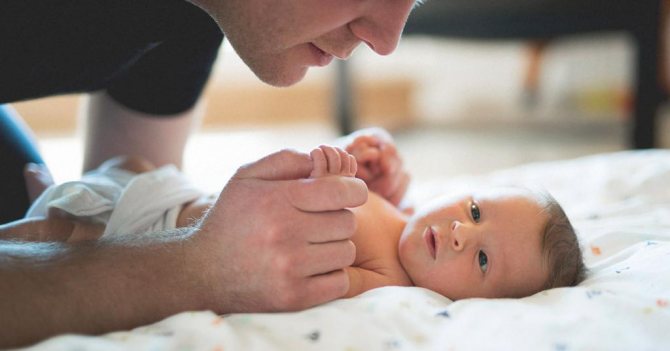
The following exercise is aimed at the ability to roll over:
- The baby should lie on his back.
- The left leg is straightened, the mother clasps the right leg with her right hand.
- The right leg must be moved so that it overlaps the left one, while the baby must instinctively roll over on its side.
- Do the same with your left leg.
After a series of the above exercises, parents need to monitor when the child begins to roll over from his back to the left or right side, and how often he does this.
Causes
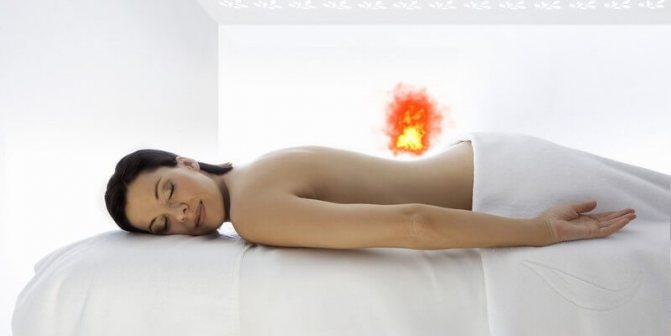
The sources of the problem can be divided into two groups. In most cases, the cause of burning and pain in the lower back is pathology of the spine. In this case, the disorder can develop in any of its departments, but the pain can be felt in the lower back. The second group of reasons is diseases of internal organs. In the presence of inflammation in the abdominal cavity or pelvis, pinched nerves and impaired circulation occur, which causes unpleasant symptoms of burning in the lumbar region.
Rolling over onto your tummy
After three months, a normally developing child exhibits active actions, trying to turn onto his stomach. This is more difficult to do than switching to the left or right side. During this period, the baby may suddenly begin to abruptly roll over on its side, trying to land on its stomach.
At about 4-5 months, children already skillfully turn their body from back to stomach. Once in this position, they instinctively try to hold their head tightly. This helps strengthen the neck muscles. When children begin to roll over from their stomach to their back and back, the head-up reflex is triggered. This is called the instinct of self-preservation.

Cause for concern
Knowing exactly what time children begin to roll over onto their stomachs, you can monitor the dynamics of the child’s development. When time passes quickly and the baby still does not try to roll over, he requires more careful attention, and, if necessary, consultation with a pediatrician.
If in the period from 4 to 6 months the baby does not try to roll over, it is necessary to find out the reason for his passive behavior. First of all, the baby needs to be examined by a neurologist. If a problem is identified, the doctor prescribes therapeutic swimming and massage.
The need for health-improving gymnastics
Exercises are necessary to strengthen the musculoskeletal system and develop the nervous system. This will help the baby become active and learn to perform simple movements himself. Thanks to health-improving gymnastics, children develop the skills to change body posture, roll over onto their tummy, side or back.
When babies begin to roll over, they should use both sides. Rolling over to one side can negatively affect the baby's spine. The symmetry of the vertebrae may be disrupted, and this is detrimental to the back muscles. To practice double-sided turning, you need to use your baby’s favorite toys.
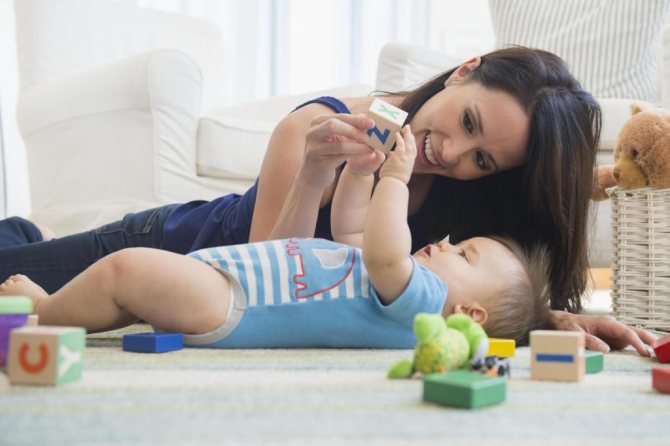
It is not recommended to do the exercises if the child is not in the mood or during the exercise he begins to be capricious for no reason. Perhaps some movement is causing him pain. The cause of whim is often hunger. In such cases, gymnastics will not lead to improvement.
You also need to take into account that each child has an individual body and character. It is a mistake to demand from a child something that he is not yet accustomed to and is not ready for. If gymnastics causes negative feelings in a child, it is necessary to suspend classes and make do with massage and light baths.
What to do
First of all, you need to identify the reason for the child’s cold forehead.
. If this happens only because the baby is cold, then you need to warm him up as soon as possible. But you should not put several layers of clothing on your child, otherwise, having gotten rid of one problem, you will have another - overheating of the child, which is also not desirable for the baby.
Shells in Socks – Pour chilled white into a sock over a plastic bag, twist your teeth, squeeze your toe, drag the bag and hold it securely.
- And let it last as long as possible.
- Vegetable curd cheese - vinegar to cover the legs and curd forehead, hands and chest.
- And “Chamomile on the right” - you sleep well and will be nervous.
A child with a fever should not be left unattended and all skin, including skin condition, should be checked repeatedly. We adhere to the flow of warm liquid, provide comfort and peace.
If we are talking about the development of the disease, then you need to consult a doctor, who will treat the baby. It is worth remembering that you should never self-medicate, since we are talking about a newborn child.
First of all, you need to contact a pediatrician, who will give referrals to other specialists. Most often, he writes out a referral to a neurologist or neuropathologist, who continues to monitor the child’s condition.
If there is the slightest suspicion of rickets, the doctor will prescribe it and also conduct a full examination of the child. But the most important thing is not to exceed the dose prescribed by the doctor, as this can only worsen the child’s condition.
But even if, after a doctor’s examination, the child’s forehead is constantly cold, but no obvious pathologies are found, then there is no need to worry. You need to start monitoring the thermoregulation of your baby’s body and dress him warmer if it’s suddenly cold in the apartment.
As practice shows, most often parents make a big problem out of this and treat the baby for diseases they have invented.
If, in addition to this symptom, the baby does not show any other signs of the disease, then you should calm down. After all, you must admit that if a child feels bad, he will probably tell his parents about it. There should be no cause for concern in the following cases:
- The baby has a good appetite.
- The child is sleeping peacefully.
- The baby is behaving as usual and is not hysterical.
- Leads an active lifestyle.
- He develops correctly, in no way inferior to his peers.
But if the symptoms torment the child along with other manifestations of the disease, it is worth contacting a doctor, who will explain the whole picture.
In order to calm yourself down, you need to take all the tests that the doctor prescribes and only then talk about the health of the child. Often this symptom manifests itself due to fatigue and overwork, and there is nothing to worry about. You just need to give your child time to rest.
In conclusion, we can conclude that a cold forehead in a child can be a phenomenon of some kind of disease, or simply a physiological process. Therefore, if you notice a similar symptom in your child, do not panic.
, you need, on the contrary, to calm down and consult a doctor about the issue that has arisen. You also need to observe your child’s behavior; if it is no different from usual, then there should be no reason to worry.
When the temperature rises
. Then the heat in the whole body usually increases, and this sequence is quite natural and understandable. But when the temperature remains normal, and there is a feeling of heat accompanied by redness of parts of the body, then there is no need to talk about a simple viral infection, flu or cold. What could it be when a child is “burning”, but there is no increase in temperature?
Example. In the morning, the mother noticed that the child’s cheeks were very red after sleep. An hour later the redness did not subside. At the same time, the child ate regular food. The next day he woke up with the same red face, and his cheeks were like hot coals. The next day, the mother noticed a rash - red spots on the legs and arms that did not itch and were scattered throughout the body, except for the chest and abdomen. Again there was no temperature.
This example can be supplemented with various other details and continued - in some cases, the rash persists for several days.
What could be the reason for this phenomenon?
- The first assumption is an allergic reaction. An allergen can be anything - food, room dust, mites in an old pillow, even frosty air.
- The cause of severe redness of the skin without a rise in temperature may be giardiasis.
- A child's burning cheeks may precede the appearance of atopic dermatitis on the arms and legs.
- An atypical reaction to the sun can also cause cheeks to burn.
- Rash and burning cheeks are also observed with parovirus infection. It is sometimes confused with rubella. To prevent this from happening, it is necessary to undergo special tests.
- - this is also one of the possible reasons for the appearance of a rash and red burning cheeks. With rubella, red, non-itchy spots also appear on the body, and the child “burns.”
- Sometimes scarlet fever begins this way - a fever appears, the child is burning, but at the same time he does not have a temperature, and he feels quite good. Only after a few days does the illness really take hold.
Source
Turning the baby onto his back
A child's activity, starting from two months, is a very important aspect in his development. If you adhere to the calendar used in pediatrics, the child must first roll over from his back to one side and the other. According to norms, this occurs in the 3-4th month of a baby’s life.
After a month, he begins to roll from his side to his tummy. After two difficult stages have been completed, all that remains is to learn how to take the starting position (lie on your back).
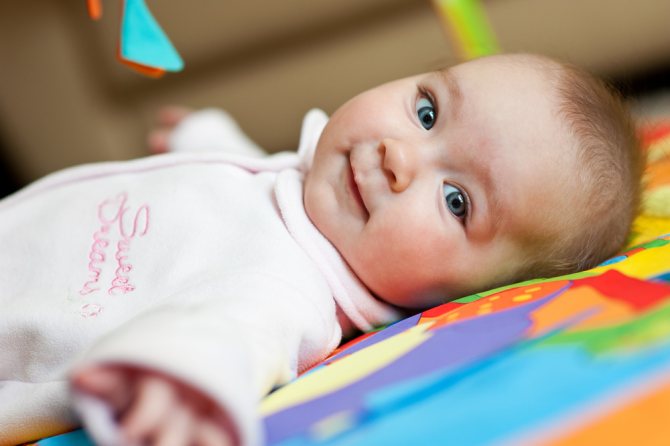
In pediatrics, conventional norms have been established for what time a child begins to roll over onto his back. It is impossible to say exactly at what age this process occurs, but at about 6-7 months the baby should already be able to roll from his tummy to his back. If the baby cannot turn on his back within the prescribed period, this only indicates a slower pace of his development. There is no need to look for pathology in the baby’s behavior. We must not forget that children do not owe anything to anyone. Even at such a tiny age, they, one might say, decide for themselves how to act.
Why doesn't the baby roll over from his stomach to his back?
Sometimes the delay in activity is related to the baby’s health. For example, decreased muscle tone (hypotonia) is a very common disease in children today. During the period when children begin to roll over onto their backs, many of them experience drowsiness, physical weakness, and lack of appetite. These symptoms occur in children with neuromuscular disorders. Passivity often manifests itself as a result of phlegmatism.
It is much easier for a baby to turn from his back to his side or to his stomach than to go to his original position. Therefore, the transition from stomach to back is the last stage in the development of children's activity. For this action they require additional effort. This means that the baby must have a strong neuromuscular system.
The weight of the child must also be taken into account. Typically, overweight children are slow and excessively calm, and accordingly, their activity in movements is significantly different from the activity of children with normal weight.
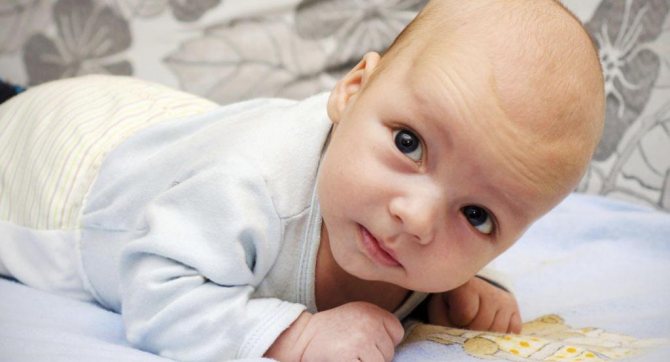
Other reasons
There are dozens of serious diseases that can cause back pain in children. Osteochondropathy of the spine, spondylitis, spondylolisthesis and other anomalies are becoming younger and increasingly appear in adolescents.
If the symptoms are persistent and increasing, then it is worth examining the child and eliminating the possibility of the following ailments:
- Intervertebral hernia;
- Spondylolisthesis (vertebral displacements);
- Spondylosis (ossification of joints);
- Tumor and tuberculosis processes;
- Hematological problems;
- Osteoporosis;
- Juvenile spondyloarthritis.
Degenerative lesions of the spine (spondylosis and spondyloarthrosis of various types, vertebral displacement, etc.) are rare in children. They can develop after fractures, acute inflammation, etc. A similar disease can be assumed if a child complains of back pain in the morning.
Osteoporosis is another rare but very unpleasant disease that causes back pain. It can occur if children had signs of rickets in early childhood. Also, taking certain medications (for example, anticonvulsants) can block the normal absorption of calcium and provoke osteoporosis.
If a child complains of severe pain in the spine that appears after a fall or active sports exercise, an X-ray should be taken to check for a compression fracture. If you react in time, such fractures will heal successfully. But in the future, the spine will need to be given special attention: after such injuries, osteochondrosis and other ailments often develop.
How does the course of pregnancy affect the child’s activity?
The condition of the expectant mother during pregnancy is of great importance for the active development of the baby. If it occurs with complications or for any reason the baby is born ahead of schedule, he will definitely lag behind normally born children in development. Accordingly, the baby is not able to show timely activity in turning over on its side, tummy or, conversely, on its back. At what point do babies begin to roll over if they are born with problems depends on their postpartum condition.
We must not forget that in many cases prematurely born children at the age of 2-3 months show hyperactivity, significantly ahead of their peers. It is quite expected that at 2 months such a baby will begin to turn on the right or left side without making much effort.
Rules for parents
To help when babies begin to roll over, you need to follow some rules:
- You should never compare your baby with other children. It is important to know that each child develops individually.
- Parents should remain calm and show great patience, and not make sudden movements during activities so that the baby does not get scared.
- You need to give him time to try to roll over on his side or on his tummy, then return to his original position. It is important that he is in the safest possible place during active operations.
Useful tips
When a child has already learned to roll over on his own, you need to seriously think about his safety. During the period of his active games, you need to make sure that he is in a playpen or on a carpet, from where he will not be able to fall.
It is also necessary to ensure that the baby does not make sudden movements during gymnastics. He may roll over unsuccessfully, which will seem difficult to him, and he will no longer want to return to this exercise. You should not force a child to do something that he voluntarily refused.
The baby should take up gymnastics with pleasure. Only in this case can he enjoy his activities. He definitely needs to be encouraged and praised for every successfully completed coup without outside help. Classes with a child, training and the right approach during classes with him have a positive effect not only on his musculoskeletal system, but also on the mood in which he will remain during the day.
What to give before bed to prevent night attacks
Attacks of dry cough in a child at night are a reason to consult a doctor. To reduce them, before going to bed you should perform certain activities that significantly improve the condition.
Drugs
Many parents ask doctors how to reduce their child’s cough at night. Medicines are prescribed based on age, cause and course of the disease. They are synthetic, plant-based and combined. Prolonged dry cough is treated with antitussive tablets and syrups:
- Central action, which directly affects the cough center located in the brain: Sinekod, Panatus Forte, Bronholitin, Omnitus.
- Peripheral action, suppressing the cough reflex and providing an anti-inflammatory effect without affecting the respiratory center: Libexin, Falimint.
- Combined agents: Stoptussin, Glycodin, Bronchostop.
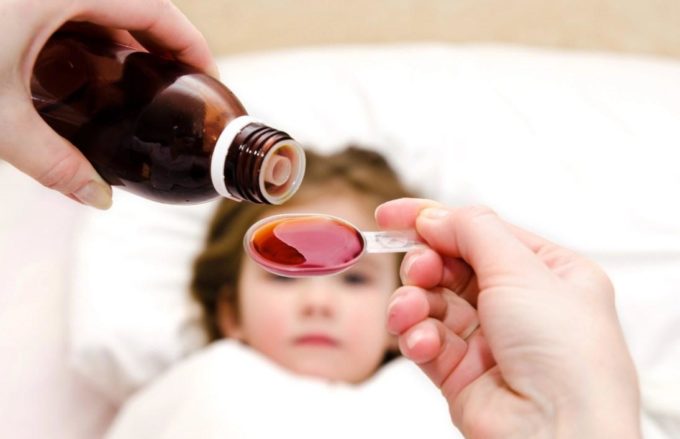
To treat an allergic cough, antihistamines are prescribed, for viral infections - antiviral drugs, and for bacterial infections - antibiotics. They do not stop coughing attacks, but they eliminate the cause of their occurrence.
Folk remedies
Alternative methods will help eliminate children's night attacks. During the day and before falling asleep, drinking plenty of fluids is recommended. This can be tea with a piece of lemon and honey, chamomile decoction, fruit drinks, compotes or plain water. The following remedies are also effective:
- Take a black radish, cut off 2 cm of its upper part, and use a spoon to make a depression of about 2-3 cm, resembling a funnel. 2-3 tbsp is poured into it. honey, covered with the cut off top. Infuses for 4-6 hours. During this time, a syrup is formed, which should be drunk three times a day, 1-2 tsp.
- Add ¼ tsp to a glass of warm milk. baking soda and 1 tsp. honey Taken 2 times a day.
- 2 figs are kneaded and boiled in 200 ml of milk for 10 minutes. You need to drink 100 ml of the decoction twice a day.
- In case of dry cough, crushed plantain leaves (2 tbsp), which are brewed in 200 ml of boiling water and left for an hour, help. The infusion is taken three times a day, 1 tbsp.
Children from 3 years old can be given onion broth. The chopped onion is boiled in a glass of milk, cooled, and 1 tsp is added. honey The child should be given 1 tbsp. every 2-3 hours.

